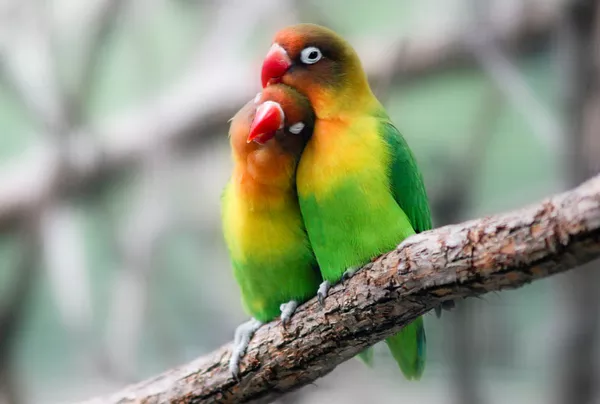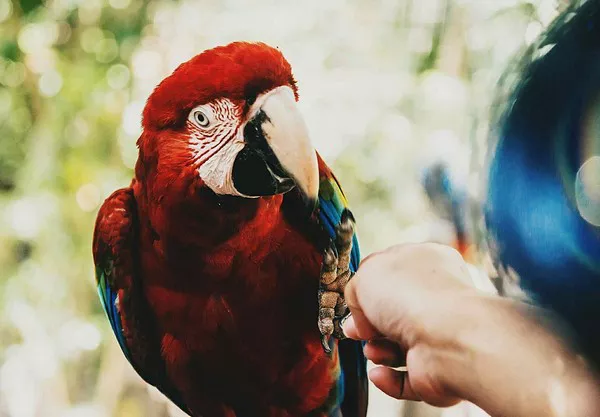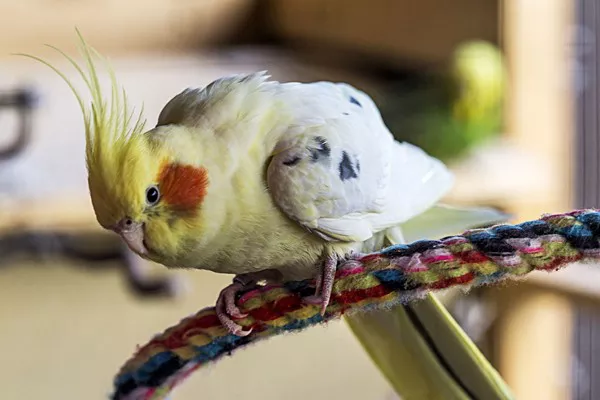When it comes to cats, there are many different colors and patterns to admire, and two of the most commonly discussed and sought-after types are tortoiseshell and calico cats. While these two can appear very similar at first glance, there are significant differences in their appearance, genetics, and sometimes even their personalities. Understanding these differences can help potential cat owners make an informed decision about which type of cat might be the best fit for their home and lifestyle.
In this article, we’ll take a deep dive into the world of tortoiseshell and calico cats. We’ll explore their physical characteristics, genetic makeup, personality traits, and more, so you can better understand what makes each of these stunning cats unique.
1. What is a Tortoiseshell Cat?
A tortoiseshell cat is a domestic cat with a distinctive coat pattern that features a blend of black, orange, and sometimes white fur. The term “tortoiseshell” refers to the combination of these colors, which resemble the pattern on the shell of a tortoise. However, it’s important to note that the term “tortoiseshell” describes the color and pattern of the coat, not a breed of cat.
Physical Characteristics of a Tortoiseshell Cat
The most defining feature of a tortoiseshell cat is its coat. Here are some common physical characteristics:
Color: Tortoiseshell cats typically have a mix of black, orange, and red colors in their coats. The shades can range from deep black to rich amber or red, and some cats may also have a touch of cream or gold.
Pattern: The pattern is often irregular, with the colors blending together in a marbled or patchy appearance. Some tortoiseshell cats may have a more symmetrical distribution of colors, while others have a more random mixture.
Size and Body Type: Since tortoiseshell cats can belong to any breed, their size and body type can vary widely. They may have short or long fur, with some having sleek and slender bodies, while others may be stockier.
Genetics of a Tortoiseshell Cat
The color pattern seen in tortoiseshell cats is due to a specific combination of genes. The primary genes involved in tortoiseshell coloration are sex-linked, meaning they are carried on the X chromosome. This is why tortoiseshell cats are almost always female. The orange (or red) fur color is due to the presence of the O gene, while black fur is a result of the B gene. Female cats typically have two X chromosomes, allowing for the combination of both black and orange colors.
Male cats, on the other hand, have only one X chromosome, and it’s very rare for them to inherit both the black and orange genes. As a result, male tortoiseshell cats are exceedingly rare, and they often have some form of genetic abnormality.
2. What is a Calico Cat?
A calico cat is similar to a tortoiseshell cat in that it has a distinctive mix of colors, but there are key differences in the patterns and the presence of white fur. Calico cats are often referred to as “tricolor” cats due to the inclusion of a third color: white.
Physical Characteristics of a Calico Cat
The physical traits of a calico cat are somewhat similar to those of a tortoiseshell cat, but with notable differences:
Color: Like tortoiseshell cats, calico cats have a mix of orange and black, but they also include white fur. The orange can range from pale cream to deep red, while the black is usually a solid color or a slightly diluted version. The white fur adds a crisp contrast to the overall look.
Pattern: The calico pattern tends to be more structured than the tortoiseshell pattern. The orange, black, and white patches are often more distinct, with larger blocks of color that are easier to distinguish. The pattern can vary widely between individual cats.
Size and Body Type: Like tortoiseshell cats, calicos can belong to various breeds and have different sizes and body types. They can have short or long coats, with some having sleek, graceful builds and others being more muscular.
Genetics of a Calico Cat
The genetics of a calico cat are also quite fascinating. The presence of the white fur in calico cats is due to a different genetic factor compared to tortoiseshell cats. In addition to the sex-linked black and orange genes, the white coloration comes from a separate genetic marker, often called the “white spotting” gene.
Similar to tortoiseshell cats, most calico cats are female because they need two X chromosomes to inherit both the orange and black fur genes. The addition of the white gene gives them a distinct and striking appearance. Male calico cats are extremely rare, and like male tortoiseshell cats, they often have a genetic abnormality such as Klinefelter syndrome.
3. Key Differences Between Tortoiseshell and Calico Cats
Now that we’ve established what tortoiseshell and calico cats are, let’s take a closer look at the key differences between the two. While these cats may share similarities, there are some distinct features that set them apart.
Color Patterns
The most obvious difference between tortoiseshell and calico cats is their color pattern.
Tortoiseshell Cats: Tortoiseshell cats typically have a mix of black and orange, with the colors blending together in an irregular, marbled pattern. The pattern is more subtle, with fewer clear-cut boundaries between the colors.
Calico Cats: Calico cats have the same black and orange colors, but the addition of white creates a more distinct, tricolored appearance. The black, orange, and white colors are often arranged in larger, more defined patches.
Presence of White Fur
Another important distinction is the presence of white fur:
Tortoiseshell Cats: Tortoiseshell cats do not have white fur. Their coats are typically made up of black, orange, and sometimes cream or gold, but there is no pure white fur present.
Calico Cats: Calico cats always have white fur in their coats. The white fur is usually mixed with the black and orange, creating a striking contrast.
Pattern Symmetry
The pattern of the colors can also differ between tortoiseshell and calico cats:
Tortoiseshell Cats: The colors in tortoiseshell cats tend to blend more randomly, creating a unique and irregular pattern. Some cats may have areas of solid color, while others may have more marbled sections.
Calico Cats: Calico cats generally have more symmetrical, defined patches of color. While the pattern still varies from cat to cat, the color blocks tend to be larger and more clearly delineated.
Genetic Differences
Both tortoiseshell and calico cats are affected by the same sex-linked genes, but there is a key genetic difference when it comes to the white fur in calico cats:
Tortoiseshell Cats: Tortoiseshell cats do not have the white spotting gene, and their colors are usually confined to black and orange (or red).
Calico Cats: Calico cats have an additional white gene that causes the presence of white fur in their coat. This is what gives calicos their tricolor appearance.
Rarity of Male Cats
Both tortoiseshell and calico cats are predominantly female due to the genetic mechanisms involved. However, male cats of either type are very rare and typically have some form of genetic abnormality.
Male Tortoiseshell Cats: Male tortoiseshell cats are extremely rare and typically have a genetic condition called Klinefelter syndrome, where they have two X chromosomes in addition to the usual male XY pair.
Male Calico Cats: Male calico cats are also very rare and, like male tortoiseshells, usually have a genetic abnormality such as Klinefelter syndrome.
4. Personality Traits: Tortoiseshell vs. Calico
While there are clear physical and genetic differences between tortoiseshell and calico cats, their personalities can also vary. However, it’s important to remember that every cat is an individual, and personality traits can be influenced by factors such as breed, upbringing, and socialization. That said, there are some generalizations that can be made based on color patterns.
Tortoiseshell Cats
Tortoiseshell cats are often described as having strong and independent personalities. They are known to be feisty and can sometimes have a bit of a “tortitude,” meaning they are more likely to assert themselves and be vocal about their needs. Some tortoiseshell cats may be more aloof or reserved, while others are affectionate and loving.
Temperament: Tortoiseshell cats may be a bit more high-strung or sensitive, and they might not always enjoy being handled too much. However, many of them form strong bonds with their owners and can be very affectionate when they feel comfortable.
Playfulness: Tortoiseshell cats can be quite playful and active. They often enjoy playing with toys, climbing, and exploring their surroundings.
Affection: While some tortoiseshell cats may be more independent, others can be very cuddly and enjoy spending time with their human companions. It all depends on the individual cat.
Calico Cats
Calico cats are often known for their sweet and gentle nature, though they can also be quite independent. They tend to have more laid-back personalities compared to tortoiseshell cats, though they still enjoy engaging with their owners and playing.
Temperament: Calico cats are generally more relaxed and easier to handle than tortoiseshells, though they can still have strong personalities. They are known to be friendly, social, and affectionate with their families.
Playfulness: Like tortoiseshell cats, calicos are also playful and enjoy exploring and playing with toys. They are typically curious and enjoy interacting with their environment.
Affection: Calico cats tend to be affectionate and enjoy spending time with their human companions. They may enjoy cuddling or simply sitting next to their owners while they work or relax.
5. Health Considerations for Tortoiseshell and Calico Cats
When it comes to health, both tortoiseshell and calico cats are subject to the same general feline health concerns. However, there are some genetic considerations to be aware of, particularly when it comes to rare male tortoiseshell and calico cats.
Health of Female Cats
Female tortoiseshell and calico cats are typically healthy and do not experience any specific health issues related to their coat color. However, like all cats, they may be prone to common feline conditions such as dental problems, obesity, and kidney disease. Regular veterinary check-ups are essential to maintaining a cat’s overall health.
Health of Male Cats with Klinefelter Syndrome
Male tortoiseshell and calico cats often have a condition called Klinefelter syndrome, which occurs when they inherit an extra X chromosome. These cats may experience some health complications related to this condition, including infertility, developmental issues, and certain hormonal imbalances. Male tortoiseshell and calico cats are rare, and potential owners should be aware of the potential challenges associated with this genetic anomaly.
Conclusion
Tortoiseshell and calico cats are two beautiful and unique types of domestic cats, each with their own distinctive appearance and genetic makeup. While they share similarities, such as their stunning color combinations, they differ in their patterns, the presence of white fur, and their overall appearance. Tortoiseshell cats have a more marbled and irregular coat, while calicos are known for their defined patches of black, orange, and white.
Both types of cats are most commonly female, and while rare male tortoiseshell and calico cats do exist, they often have genetic conditions like Klinefelter syndrome. Their personalities can also differ, with tortoiseshell cats often being described as feisty and independent, while calico cats are more likely to have a friendly and affectionate nature.
Regardless of whether you choose a tortoiseshell or calico cat, both types can make wonderful companions and bring joy to any household. Ultimately, the most important thing is to choose a cat whose personality and needs align with your own.
Related Topics:

























